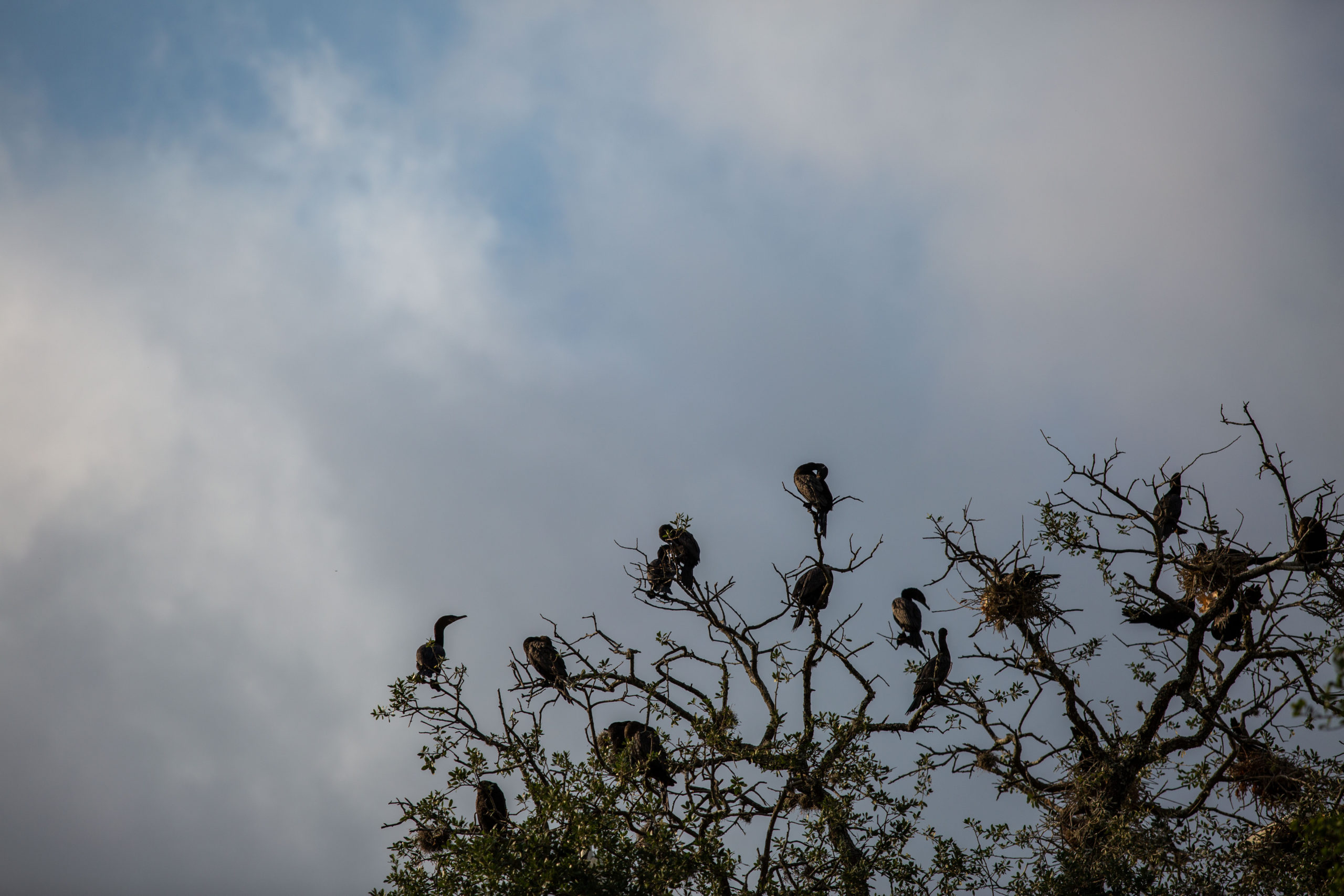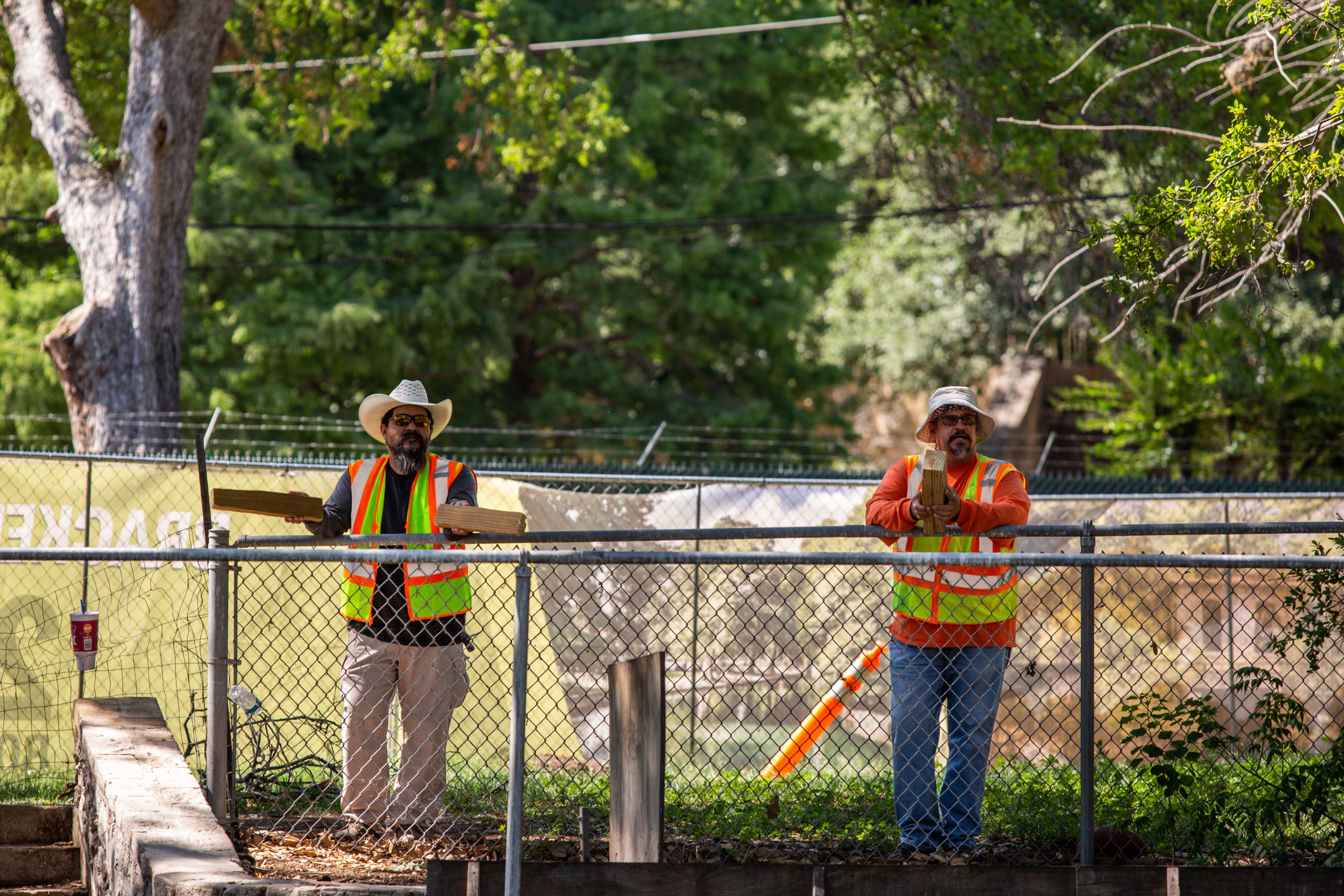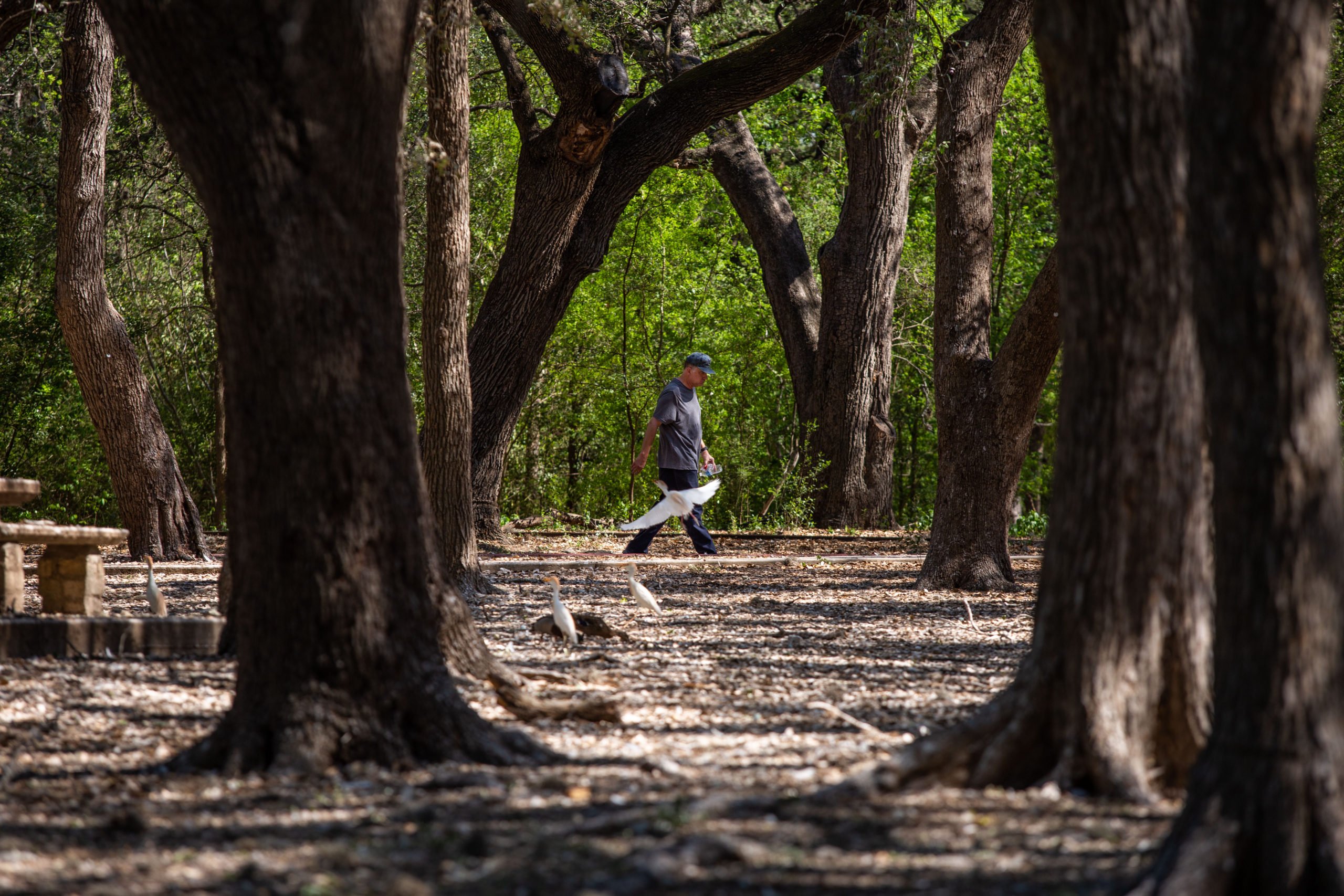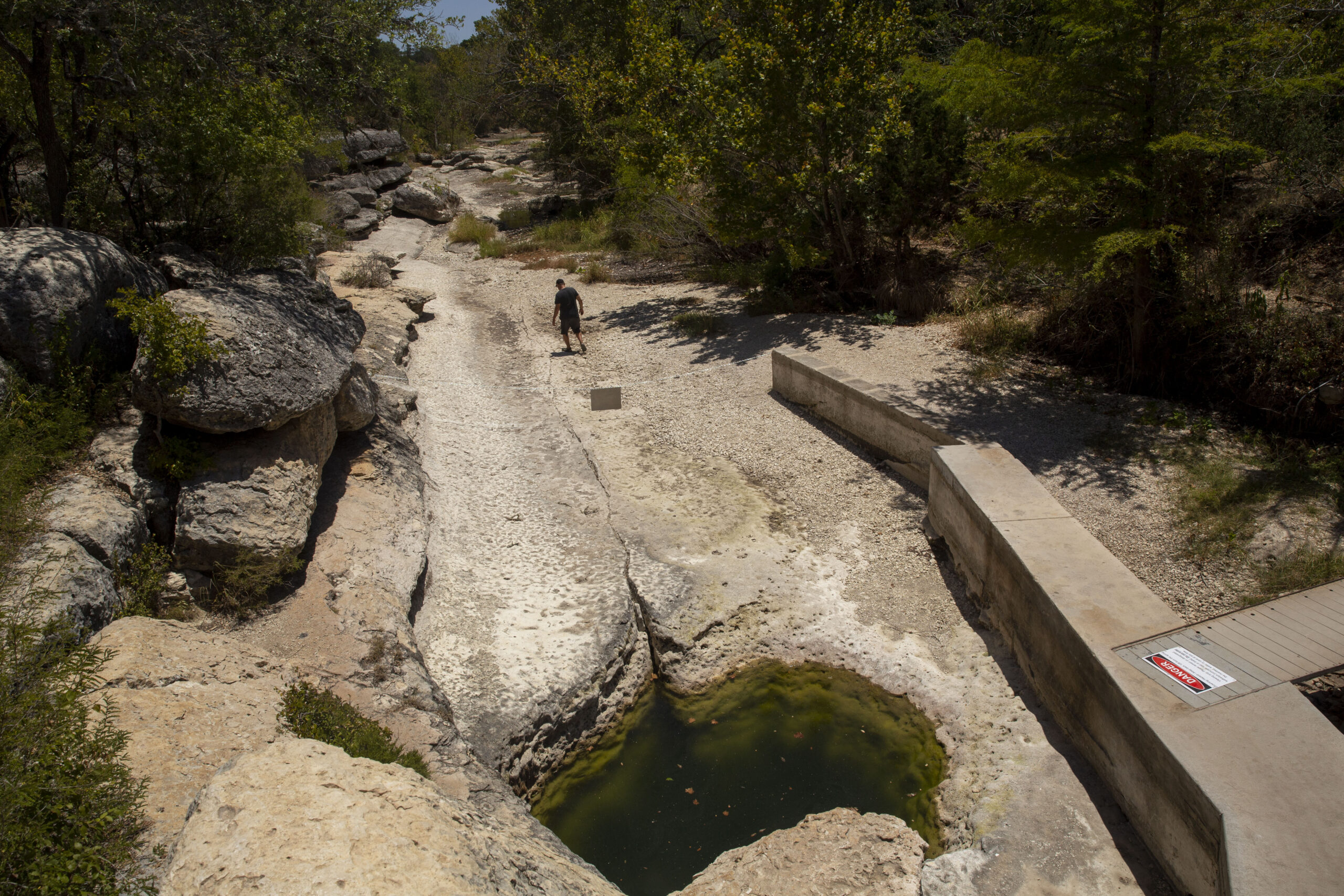“Everyone knows it’s good luck, if inconvenient, when a bird shits on you.”
On an April afternoon, writer and activist Marisol Cortez read this line from a Ross Gay poem to a small audience in the grass of San Antonio’s Brackenridge Park, part of an event dubbed “Words for Birds and the Trees They Live In.”
Cortez’s choice of poem was political. Behind her, hundreds of egrets and cormorants swooped around a stand of trees by a bend in the San Antonio River. A few daring people walked quickly under the birds, but stone picnic tables—plastered with white droppings—sat unused by parkgoers.
These migratory birds’ nesting habitat is in danger. Five years ago, San Antonians approved funding to improve Brackenridge Park, a roughly 350-acre green space in the heart of the city. But voters were surprised when plans released this year—officially meant to rehabilitate a historic irrigation canal, pump house, and crumbling river walls—called for cutting down 105 trees including willows, oaks, and cedar elms.
Park officials denied their plan had anything to do with the prolific birds. But reporting by Deceleration (founded by Cortez and her partner, journalist Gregory Harman) revealed that in internal communications, city staff referred to avian eviction as a welcome byproduct.

“It’s a classic urban-wildlife conflict,” said Britt Coleman, president of the Bexar Audubon Society, during a walk through the park a few weeks after the poetry reading.
Concerns center on the bird colony’s poop, which at times renders the picnic area and a nearby playground unfit for human use. The wild birds also fly freely into the San Antonio Zoo next door, leaving their waste behind while absconding with zoo animals’ fortified food—which Coleman speculated may be “bulking up” mother egrets and enabling them to lay more eggs.
Despite all this, many locals love the stately trees and their feathered residents. Since January, activists have held “Stop the Chop” protests in the park.
“It hurts to see nature struggle to survive,” said activist Alesia Garlock, who’s followed the birds’ saga for years.
“It’s like somebody opened up the clouds and bird poop rained down.”
In response to public outcry, the city held a series of meetings that culminated in a plan to chop down slightly fewer trees and relocate some instead. The project still needs approval from the Texas Historical Commission and the Army Corps of Engineers. In the meantime, the controversy is forcing San Antonians to consider whether non-human creatures have equal claim to the city’s public spaces.
As we walked gingerly around the rookery, Coleman said the picnic tables used to be in high demand. During Easter, San Antonio families traditionally camp, picnic, and barbecue in the park. Now, “It’s like somebody opened up the clouds and bird poop rained down,” he observed.
But the scene was also beautiful. Like tiny aerial ballet dancers, the birds flew with toes pointed and feathers fanned out. The show’s star, the cattle egret, is a small white bird that migrates from Latin America to the southern United States to breed. Named for the livestock they often follow, the birds adapt to urban parks too. One of their only stipulations is that they nest en masse, seeking safety in numbers.
Many of the birds here are likely refugees from the local government’s game of Whac-A-Mole. In 2019, a rookery on an island in nearby Elmendorf Lake was evicted—using tree removal, pyrotechnics, and laser pointers—after complaints from the neighboring Air Force base. In 2020, the river walk in a historic neighborhood near downtown got the same treatment.

On a return visit to Brackenridge in May, I got a preview of the city’s next whack. Sudden bursts of noise rang out every minute or two, from two-by-four blocks of wood clapping together. A pair of park staff sat in the roped-off playground, clapping listlessly as the afternoon sun beat down and sweat poured down their faces. Another pair strolled along the opposite riverbank by the zoo.
The city has assigned these workers to keep birds away using the power of incessant noise. Such harassment could run afoul of the federal Migratory Bird Treaty Act, but the law leaves room for interpretation, and abundant species like the cattle egret rank low on conservationists’ list of concerns.
Even if the Brackenridge birds move along, San Antonio will still have to grapple with the rights of wildlife in an urban environment, a fact the city’s Parks Director Homer Garcia readily acknowledges. Together with the state parks department, he expects to start work on a longer-term wildlife management plan in the fall.
Bexar County Audubon believes that while the city’s original project design was extreme, having a growing rookery in the park is unsustainable. The organization wants to establish alternative nesting grounds in southern Bexar County.
During our walk, Coleman declined to venture directly under the rookery, instead admiring it from the sidelines. Many of the egrets carried sticks in their beaks, diligently building nests. Though early in the breeding season, Coleman suspected a few had laid eggs already.
“Yeah, you see a lot of poop,” he said. “But you see a lot of life and energy, too.”




